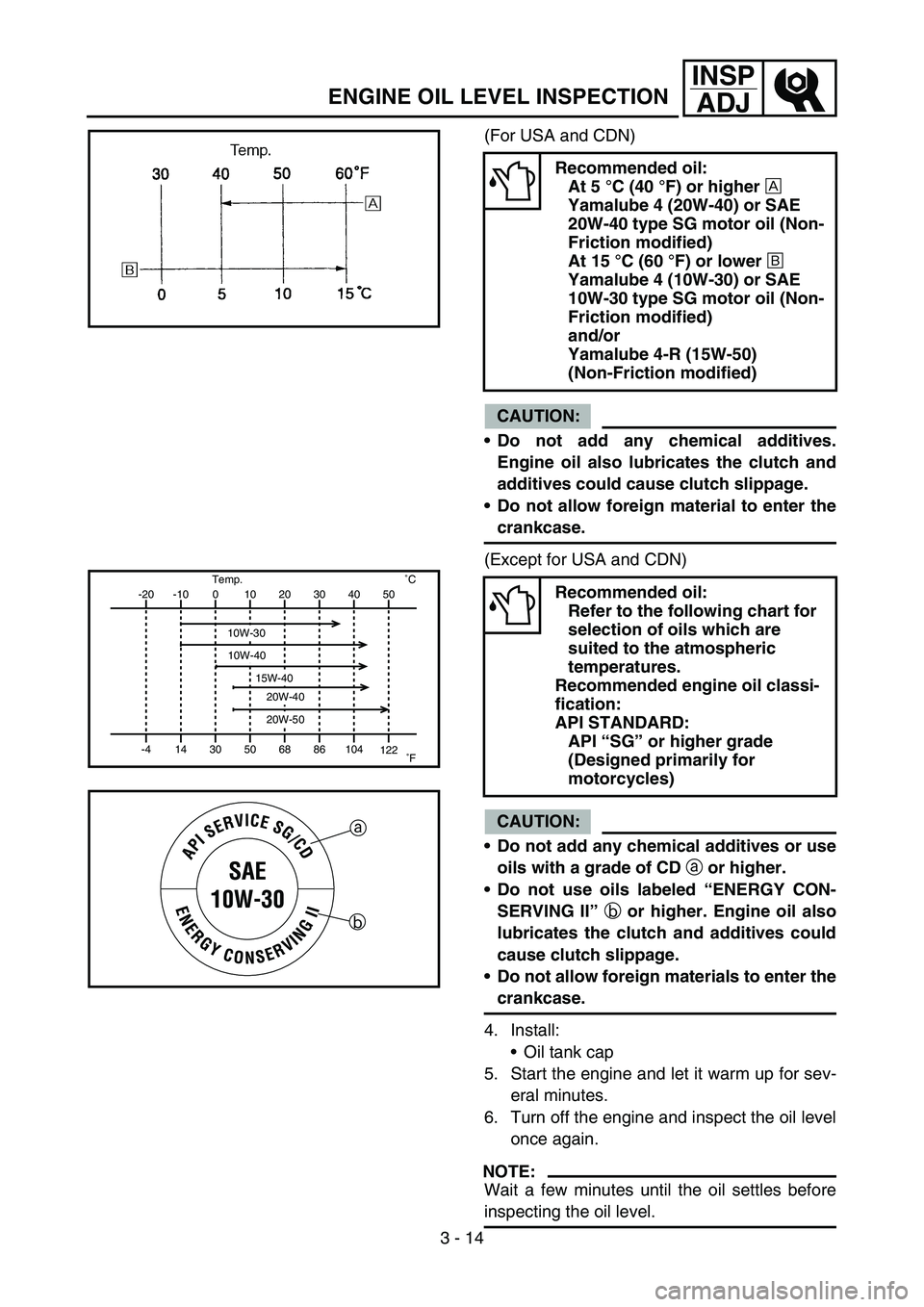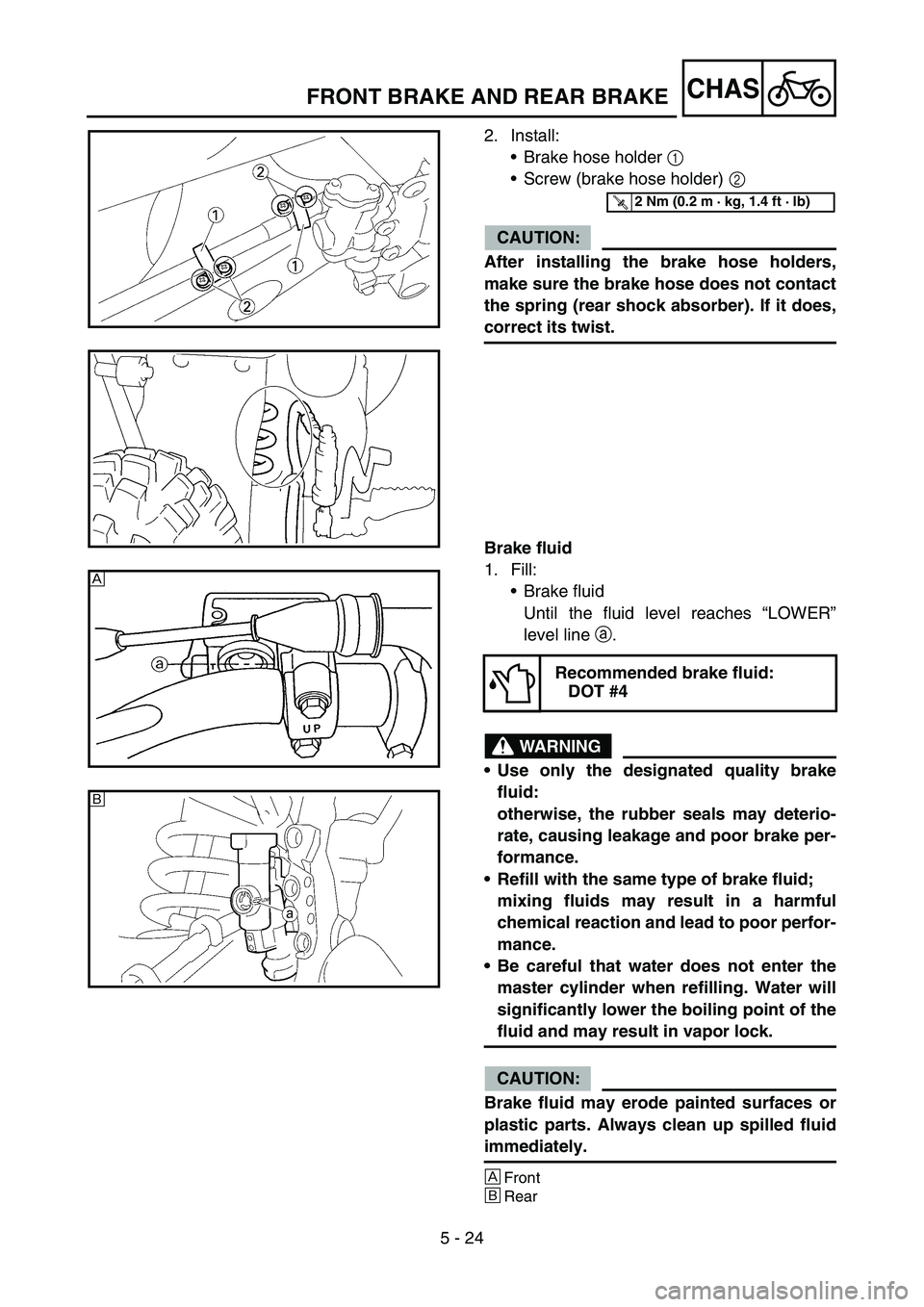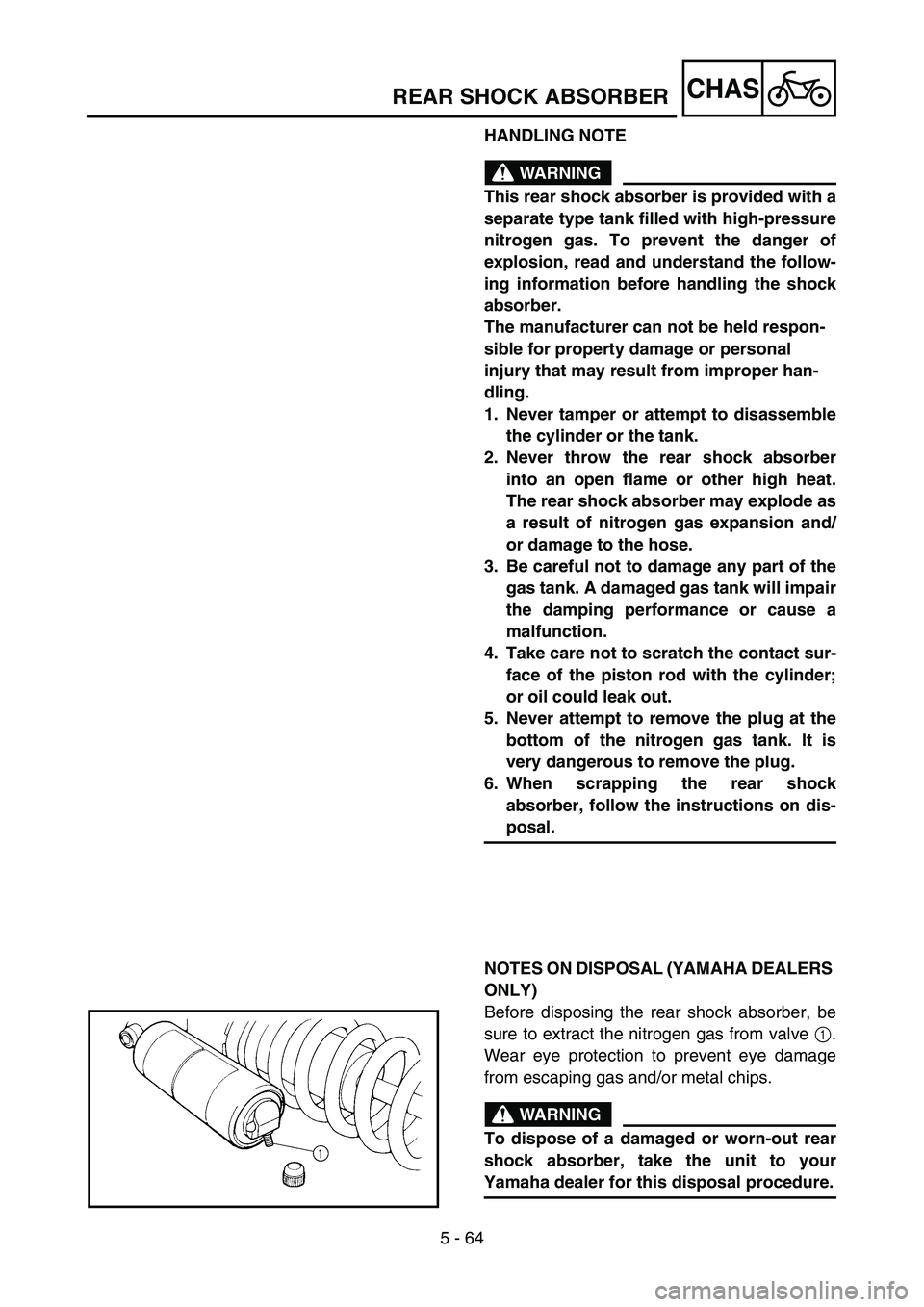oil type YAMAHA YZ250F 2006 User Guide
[x] Cancel search | Manufacturer: YAMAHA, Model Year: 2006, Model line: YZ250F, Model: YAMAHA YZ250F 2006Pages: 674, PDF Size: 21.07 MB
Page 188 of 674

3 - 14
INSP
ADJ
ENGINE OIL LEVEL INSPECTION
(For USA and CDN)
CAUTION:
Do not add any chemical additives.
Engine oil also lubricates the clutch and
additives could cause clutch slippage.
Do not allow foreign material to enter the
crankcase.
(Except for USA and CDN)
CAUTION:
Do not add any chemical additives or use
oils with a grade of CD
a or higher.
Do not use oils labeled “ENERGY CON-
SERVING II”
b or higher. Engine oil also
lubricates the clutch and additives could
cause clutch slippage.
Do not allow foreign materials to enter the
crankcase.
4. Install:
Oil tank cap
5. Start the engine and let it warm up for sev-
eral minutes.
6. Turn off the engine and inspect the oil level
once again.
NOTE:
Wait a few minutes until the oil settles before
inspecting the oil level.
Recommended oil:
At 5 °C (40 °F) or higher
È
Yamalube 4 (20W-40) or SAE
20W-40 type SG motor oil (Non-
Friction modified)
At 15 °C (60 °F) or lower
É
Yamalube 4 (10W-30) or SAE
10W-30 type SG motor oil (Non-
Friction modified)
and/or
Yamalube 4-R (15W-50)
(Non-Friction modified)
Recommended oil:
Refer to the following chart for
selection of oils which are
suited to the atmospheric
temperatures.
Recommended engine oil classi-
fication:
API STANDARD:
API “SG” or higher grade
(Designed primarily for
motorcycles)-20
-4-10
140
3010
5020
6830
8640 50
104
122 ˚CTemp.
˚F
10W-30
10W-40
20W-40
20W-50
15W-40
a
b
Page 506 of 674

5 - 24
CHASFRONT BRAKE AND REAR BRAKE
2. Install:
Brake hose holder 1
Screw (brake hose holder) 2
CAUTION:
After installing the brake hose holders,
make sure the brake hose does not contact
the spring (rear shock absorber). If it does,
correct its twist.
Brake fluid
1. Fill:
Brake fluid
Until the fluid level reaches “LOWER”
level line a.
WARNING
Use only the designated quality brake
fluid:
otherwise, the rubber seals may deterio-
rate, causing leakage and poor brake per-
formance.
Refill with the same type of brake fluid;
mixing fluids may result in a harmful
chemical reaction and lead to poor perfor-
mance.
Be careful that water does not enter the
master cylinder when refilling. Water will
significantly lower the boiling point of the
fluid and may result in vapor lock.
CAUTION:
Brake fluid may erode painted surfaces or
plastic parts. Always clean up spilled fluid
immediately.
È
Front
ÉRear
Recommended brake fluid:
DOT #4
T R..2 Nm (0.2 m · kg, 1.4 ft · lb)
È
É
Page 586 of 674

5 - 64
CHAS
HANDLING NOTE
WARNING
This rear shock absorber is provided with a
separate type tank filled with high-pressure
nitrogen gas. To prevent the danger of
explosion, read and understand the follow-
ing information before handling the shock
absorber.
The manufacturer can not be held respon-
sible for property damage or personal
injury that may result from improper han-
dling.
1. Never tamper or attempt to disassemble
the cylinder or the tank.
2. Never throw the rear shock absorber
into an open flame or other high heat.
The rear shock absorber may explode as
a result of nitrogen gas expansion and/
or damage to the hose.
3. Be careful not to damage any part of the
gas tank. A damaged gas tank will impair
the damping performance or cause a
malfunction.
4. Take care not to scratch the contact sur-
face of the piston rod with the cylinder;
or oil could leak out.
5. Never attempt to remove the plug at the
bottom of the nitrogen gas tank. It is
very dangerous to remove the plug.
6. When scrapping the rear shock
absorber, follow the instructions on dis-
posal.
NOTES ON DISPOSAL (YAMAHA DEALERS
ONLY)
Before disposing the rear shock absorber, be
sure to extract the nitrogen gas from valve 1.
Wear eye protection to prevent eye damage
from escaping gas and/or metal chips.
WARNING
To dispose of a damaged or worn-out rear
shock absorber, take the unit to your
Yamaha dealer for this disposal procedure.
REAR SHOCK ABSORBER